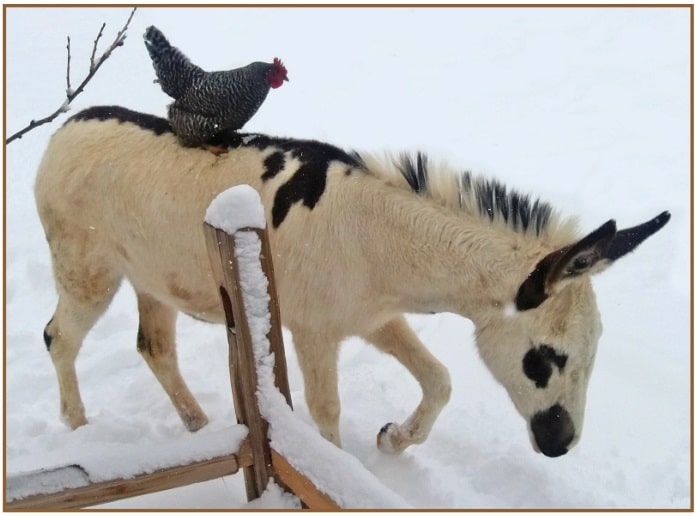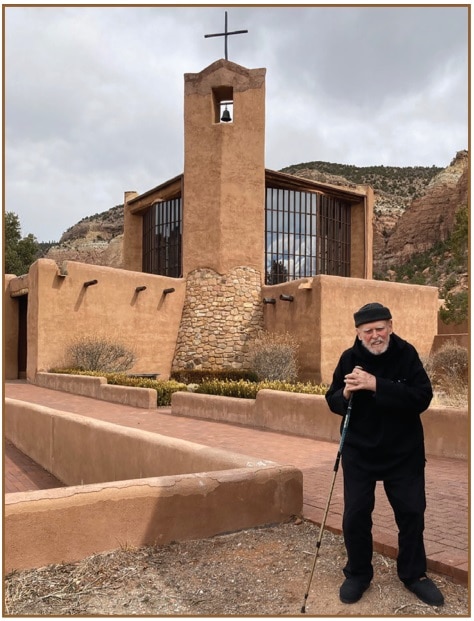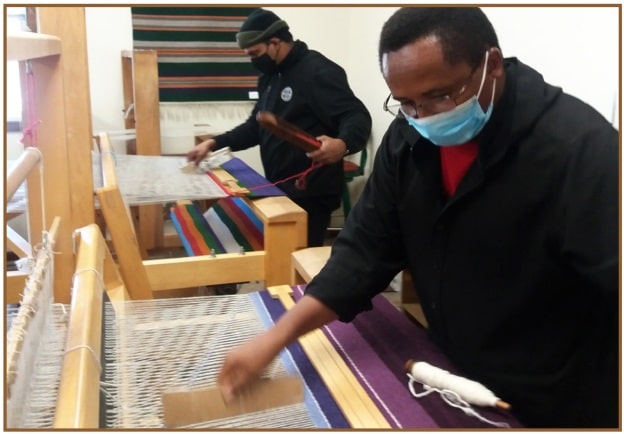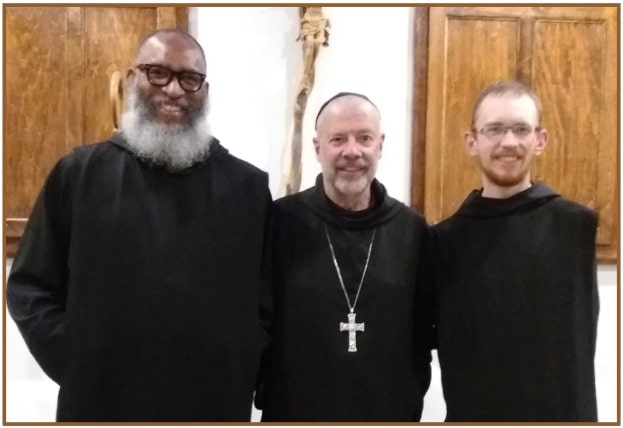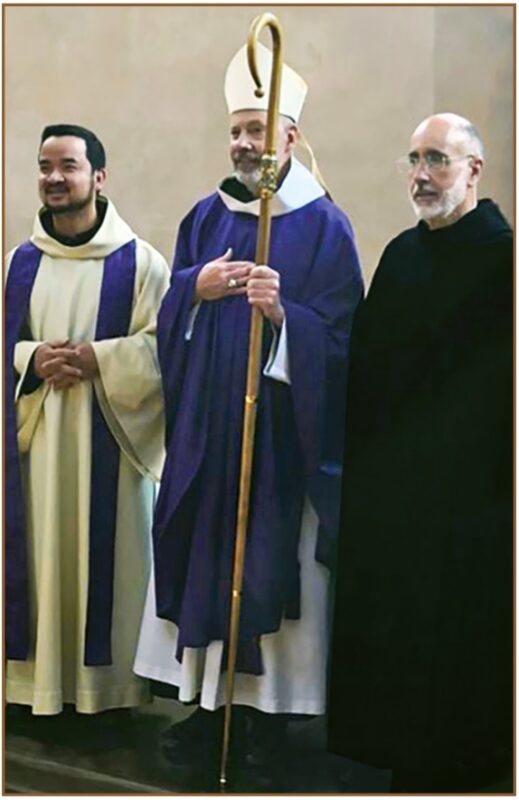CONVERSION OF LIFE
At the heart of every Christian vocation is the call to “conversion” or “change of heart.” And what does that mean? Basically it is a matter of avoiding whatever is not of God and embracing God’s ways of love, forgiveness, communion, and doing good. The Greek word for conversion is “metanoia,” which indicates a change of direction, a turning around. Once again, for the Christian it is all about going in “God’s direction,” we might call it, turning toward the source of all good and light, namely, God.
Not so long ago we completed the Liturgical Seasons of Lent and Easter, when we meditated on the return to the Lord through prayer, fasting and almsgiving. The penitential Season of Lent led right into the joy of resurrected life in Jesus Christ, the Savior of all peoples. Past, present and to come!
It is good to keep in mind that conversion is not normally a “once and for all” matter, as if we have at some point in life a change and the rest of life is smooth sailing. Certainly the Benedictine path that we follow at Christ in the Desert is about a daily turning to God, by no means simply “once and for all.”
At the time of their monastic profession, Benedictine monks and nuns publicly profess a vow of “conversion of life,” (“conversatio morum” in Latin), which implies a constant turning toward God, like a sunflower seeking the sun. “Girasol” is the name for the sunflower in Spanish, which can be translated as “gyrating toward the sun.” That is what monks and nuns aspire to, costing “not less than everything,” as the poet T.S. Eliot described the idea of wholehearted adherence to something or Someone. That is actually the “work” of every Christian, of course, not just monks and nuns!
I think every monk or nun will admit he or she never achieves conversion perfectly in this life, but we keep on trying nonetheless, day by day, and never give up the work of drawing closer to the Lord, who is in fact “nearer to us than we are to ourselves,” as Saint Augustine of Hippo wrote in the fourth century.
The point of conversion is never for show or to outdo others in virtue. That is vanity and not sanctity! Rather, conversion is about growing in transparency by daily fidelity, by gentleness with ourselves and others and availability to whatever we are called on to do or can see that needs to be done. It is all to be carried out
in the service of the God to whom we have been called to belong from all eternity and forever. This issue of the monastery Newsletter is devoted to the theme of conversion, “conversatio,” and I hope you enjoy the handiwork of our brothers in expressing some points of view on the topic, hoping it encourages
you, our family and friends, on your personal journey to the house of the Lord. That is where we all meet as one family of God. ✠
May the Lord bless and keep you!
Abbot Christian
ECO CONVERSION
By Father Columba
Have you found yourself during the pandemic noticing the natural world more? Many have found in their forced solitude and silence some consolation in these difficult times in a newfound attention to nature. In some cases, it is a matter of having the time to look, the quiet to listen; for others it has been a matter of the natural world asserting itself, suddenly appearing in places otherwise vacated by human activity, for example the appearance of herds of deer or antelope on city streets, among many other examples.
Indeed, it may be said that the COVID 19 virus is itself an assertion of the natural world. It has reminded us all that nature is not under human control; that while we have come to dominate nature globally in the last century especially, nature is not merely passive to us, but has behaviors and responses of which we are often only dimly aware and which we neglect and ignore at our peril. What many people are beginning to recognize in these days, and as the last three Popes have suggested, is the need for an “ecological conversion” on our part, a significantly changed human relationship to nature.
In his prophetic encyclical, Laudato Si, published in 2015, Pope Francis describes ecological conversion in terms of a “renewal of humanity” stemming from an “ecological spirituality grounded in the convictions of our faith.” In many ways presupposing the ecological crises emerging in the past two hundred years of industrialization, what makes Laudato Si so inspired and inspiring is its vision for an “integral human ecology”, a way forward for humanity that seeks to foster at once both a greater communion of creatures and peoples, and also for Christians, a profound interior conversion, an ecological conversion, “whereby the effects of their encounter with Jesus Christ becomes evident in their relationship to the natural world.”
What would such an ecological conversion look like? Pope Francis presents a number of attitudes, deeply grounded in the convictions and traditions of faith to foster “a spirit of generous care, full of tenderness”, toward other creatures, human and nonhuman alike, with his namesake St. Francis, one of the patron saints of ecology (the other is St. Kateri Tekakwitha), as a guiding light. He writes: “First (ecological conversion) entails gratitude and gratuitousness, a recognition that the world is God’s loving gift, and that we are called quietly to imitate his generosity in self-sacrifice and good works: ‘Do not let your right hand know what your left hand is doing… and your Father who sees in secret will reward you (Mt 6:3-4).’ It also entails a loving awareness that we are not disconnected from the rest of creatures, but joined in a splendid universal communion.
As believers we do not look at the world from without but from within, conscious of the bonds with which the Father has linked us to all beings… We do not understand our superiority as a reason for personal glory or irresponsible dominion, but rather as a different capacity which, in its turn, entails a serious responsibility stemming from our faith.” These words may sound strange to many of us whose catechesis in the faith said nothing about our obligations to the natural world, or what Christians believe and have believed and taught concerning nature. Yet one aspect of ecological conversion is precisely to allow us to find in Sacred Scripture and the teaching of the Church, a deep and abiding doctrine of creation that, if understood and applied, would contribute greatly to addressing some of our contemporary world problems. Such convictions of our faith include:
“…the awareness that each creature reflects something of God and has a message to convey to us, and the security that Christ has taken unto himself this material world and now, risen, is intimately present to each being, surrounding it with his affection and penetrating it with his light. Then too, there is the recognition that God created the world, writing into it an order and a dynamism that human beings have no right to ignore. We read in the Gospel that Jesus says of the birds of the air that ‘not one of them is forgotten before God (Lk 12:6).’
How can we then possibly mistreat them or cause them harm? I ask all Christians to recognize and live fully this dimension of their conversion. May the power and light of the grace we have received also be evident in our relationship to other creatures and to the world around us. In this way, we will help nurture that sublime fraternity with all creation which Saint Francis of Assisi so radiantly embodied.”
God willing, we may all safely emerge from the pandemic soon. But perhaps we ought to reflect on the Holy Father’s words here before we seek to “get back to normal” too quickly. Can we see and hear the Holy Spirit speaking to us through the natural world in the constraints of these days? Can we recognize in what has surely been a certain kind of fasting, ascetical experience for most of us, a call to embody more authentically the teachings of our faith? If so, then perhaps we need first a prayerful moment to consider how, when we emerge from the pandemic, we might enter rather more into the ecological conversion to which the Holy Father is calling us. “Go into all the world and proclaim the good news to every creature (Mk 16:15),” the Risen Lord commands us at Easter. May we each pray to know our part in this great commission in our time. ✠
Homily on Conversion
By Father Mayeul
As we begin a new liturgical year, the readings focus on God’s calling. Last week, we heard about John the Baptist introducing Jesus as the Lamb of God, and two of his disciples responded to the call of Jesus. Today’s readings continue the theme of calling and responding. In the Gospel reading, the Lord calls Simon and Andrew who are casting their nets. These two brothers become attracted quickly to His call, His person and His new form of fishing. They respond joyfully to the Caller who promises to transform them into fishers of men.
Then another call and response happens to two more brothers, James and John. Fishing may not have been too successful that day, because these two were mending their nets and when they saw Jesus, followed by Simon and Andrew, they must have thought, “Well, what happened to these guys? Why not to us!” Eventually they also left their father and the hired men, fishless and wordless, to follow along; to where, they did not know. Probably to nowhere, because their master tells them: “Foxes have dens and birds of the sky have nests, but the Son of Man has nowhere to rest his head.”
Sometimes, God calls more than once. Last Sunday, in the first reading, God called Samuel four times before getting a right response. In today’s first reading, we hear about Jonah’s being called a second time. In the first chapter of the Book of Jonah, we read about his being called for the first time to go to the great city of Nineveh and announce that God knows their wickedness. Jonah decides to escape and takes refuge in a ship. But the Lord hurled a violent wind upon the sea, and in the furious tempest that arose, the ship was on the point of breaking up. We know the rest of the story. Jonah asked to be thrown into the sea and the Lord sent a large fish, that swallowed him; and he remained in the belly of the fish three days and three nights. In the second chapter of this book, Jonah sings a great song of praise and thanksgiving for God’s having called himout of the belly of a huge fish by which he had been swallowed.
In today’s reading, we hear the second call of the prophet; God asks him to call the Ninevites to repent and to come back to God. After only one day, everybody hears the calling and responds declaring a forty-day fast. This sounds good, but if we want even more action, we can read the next chapter, the fourth.
To illustrate the lesson given by the story of Jonah, I would ask you for the permission to recall here my own story, my own experience about calling and responding. It will not be a boast, because if I must boast, I will boast of the things that show my weakness, as St. Paul says. Rather, it can be a kind of confession in the manner of St. Augustine. In 1944, I was 9 years old, and the calling happened to me for the first time. As for my responding, I left my family to join the Redemptorists, the French Canadian Missionaries in Vietnam. At that time there were minor seminaries; so one could respond to the calling and enter the minor seminary very young. Unfortunately, I was not faithful.
Like Jonah, I escaped from the call at the age of 16. Three years later I followed an ex-Redemptorist – like me – in his business and, with him, I did something absolutely wrong socially. I was caught and like Jonah, I was swallowed – not by a big fish – but by a jail, not for 3 days but for 2 years. After those two years of prison, just as Jonah, the calling came to me again and I became a Benedictine of Thien-An in Central Vietnam.
I made my first monastic vows in 1961. Three years later I left again because of a general draft in that time of war and eventually became a Captain in the Armed Forces of Vietnam fighting against Communism. And I got married. On April 30th, 1975, by an act of piracy, the Communists invaded the legal Republic of Vietnam. That famous “Fall of Saigon” forced me to be swallowed again by a “so-called” fish for a second time. This time, this “so-called” large fish was the whole system of Vietnamese Communism. I was swallowed by that big organization – a huge fish – not for 3 days not for 2 years, but for 8 years. Fortunately, after those 8 terrible years God commanded this so-called large fish, the Vietnamese Communist Party, to spew me upon the shore of Thien-Binh, and I entered Thien Binh, a Benedictine monastery of South Vietnam. That was the third calling that happened to me. It was in 1980; I performed necessary steps to obtain an “indult” from the Holy See. An “indult” is a special dispensation from the Vatican. For me, this dispensation was a permission to become a monk, even though I was married and had two children. My wife and my children had escaped from my life at that moment. Another indult came to me later. It is called “Sanatio in Radice”; in English, “Radical Sanation” or “Healing in the Root.” This decree from the Holy See recognized – by grace – the validity of my first monastic vows in 1961, regarding probably my being drafted in the army in 1964 as an accident to my monastic life.
In 1996, a special agreement between the Communist Vietnam and the U.S. Government allowed me –as being a prisoner of war – to leave Vietnam and to go to the U.S. That’s why I am here now.
The book of Jonah is not historic. It is just an allegory that teaches a lesson. It teaches that God is faithful in spite of my unfaithfulness. He chose me in spite of my duplicity. And He is obstinate in His calling, as He was obstinate in the calling of Samuel and Jonah. He never gives up. Finally, He also forgave my wife who recently died peacefully in the Catholic Church. I pray for her every day at Mass. My children are living in Texas now. That is the result of my sponsorship. I was allowed by my superior to sponsor them.
I admired St. Paul who is well aware of my current situation when he says in today’s second reading: “The time is running out. From now on, let those having wives act as not having them ✠
MONK’ S CORNER: Father Bernard Cranor
What is your name and age?
Fr. Bernard Cranor; and I am 89 years old.
How long have you been a monk at MCD?
I have been in religious life for 70 years. I began religious life as a monk at Holy Trinity Abbey in Huntsville, Utah (now closed) in 1951, and I progressed there until 1956. I left the monastery to attend college for some months. Afterwards, I joined the Domincan Order. While a Dominican I attended The Institut Catholique de Paris where I was awarded a Sacrae Theologiae Doctor [STD]. It is the final theological degree in the pontifical university system of the Roman Catholic Church. I was involved in parish work, campus ministry and taught at the Dominican seminary in California. In 1993 I entered the Monastery of Christ in the Desert where I have served as the librarian and Junior Master.
What were some of your challenges as a monk at MCD during your time here?
Community life has always posed its special challenges. I also occasionally thought about my choice to be a monk, whether this is the life I was called to by God. There have also been bouts of loneliness, primarily due to lack of contact with the outside world and that I am the sole remaining sibling in my family. The loss of work due to my fading eye sight and inability to walk has been compounded challenges.
What changes have you witnessed during your time here at MCD?
When I first arrived, we were a small community with a Prior. I have experienced the rapid growth within the community over the years.
Who is your favorite saint, and why?
Saint Joseph is my favorite saint these days. I know that I have to learn obedience. ✠
OUR BELOVED SANTO EXPERIENCES A CHANGE OF LIFE

By Brother Chrysostom
Visitors to the church at the Monastery of Christ in the Desert direct their gaze upward and around the sacred space. The absence of stained glass windows can be surprising to some. The clear tall windows of the oratory allow sunlight to pass through effortlessly, illuminating the altar and different areas of the church depending on the time of day. The canyon cliff visible through the eastward facing windows looms protectively over the church. Three well positioned crosses at the top of the canyon compel worshipers to float gazes, thoughts and prayers upward.
Perhaps the most attractive visual point within the oratory is the santo (Crucifix) positioned above the seat of the presider at Mass to the right of the Tabernacle. Our near life-sized crucifix, santo, impresses an indelible memory on any visitor to the church.
Santo is a Spanish word meaning “saint” or “holy,” applied to a holy person or to an image, such as the cross on which Christ was crucified. The term is also used for an image of a holy person (Christ, His Mother, the angels and saints) or a more tangible artifact (the cross, monstrance, Sacred Heart, etc.). The images in New Mexico called ‘santos’ are of two types: paintings (called retablos) and statues (called bultos). The influence of the saints in New Mexico extends back to the Spanish colonial period and the first Catholic settlers to the region in 1598. The isolation and lack of materials from major cities caused the Spanish New Mexicans to rely on ingenuity to obtain and create visual images, so much a part of Catholic tradition. Images were needed for instructing others in the Catholic faith as well as for devotion and prayer.
During the pandemic, we decided to have our cherished santo (Cristo) restored and repaired to its original splendor. The Crucifix, with a dramatic representation of a bloodied and wounded Jesus, is carved out of pine and weighs almost 35 pounds. The peak years of santos art were between 1830 and 1850. More materials became available to artists due to the introduction of new railroads crisscrossing the US Southwest. Our santo was crafted in the 1990s in nearby Taos, New Mexico, by santero (saint-maker) Mr. Gustavo Victor Goler.
Goler, who recently repaired and restored our santo, was raised in Santa Fe, New Mexico, among a family of Latin American art conservators and restorers. Goler’s early years were spent apprenticing in his family’s conservation studios where he learned wood-carving skills by restoring 18th, 19th and 20th century santos from Latin America and New Mexico.
Earlier this year, when Goler returned elatedly to our monastery with the restored santo, he had the opportunity to address our community and give a short lecture about santero artwork. With the help of younger brothers, Goler climbed a ladder and reinstalled the beloved art piece to its proper place in our oratory. The monks’ faces shone brightly, reflecting the comfort in seeing an important visual image returned to the church for daily liturgy.
Ours is by no means the only sacred artifact important to Catholics in the immediate area. The Cathedral Basilica of St. Francis of Assisi in Santa Fe is home to the oldest Madonna in the United States. That santo holds a place of honor in a side chapel within the cathedral, where she has been enshrined almost continuously for nearly 400 years, known today as “Our Lady of Peace.”
Although our monastery santo is not nearly as old as the Madonna in Santa Fe, we do attract many visitors who may come for only a few precious minutes to soak up the experience of our church or to participate in one of the daytime Offices such as Sext or None. It is not unusual to see visitors transfixed by the image of our striking Crucifix, lingering long after the last note of the chants of the monks have sounded, pondering the mystery of their faith through the image of Christ on the Cross in our oratory. ✠
“ CONVERSION OF LIFE ” AS WEAVERS
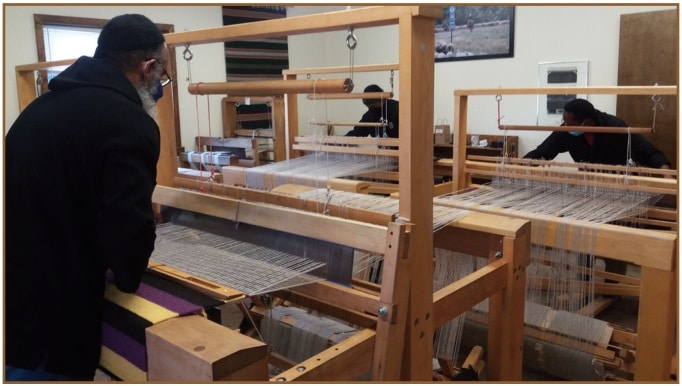
By Brother Chrysostom
Last Fall, Brothers Martin, Chrysostom, and Father Seraphim intrepidly responded in obedience to Abbot Christian’s request to enroll in Tierra Wools’ Beginning Weaving Class in Chama, New Mexico. None of the brothers had previous weaving experience. This was, yet again, an example of conversatio morum, or conversion of life. The term conversatio morum is an ancient Benedictine term. Its exact meaning is subject to some shades of interpretation, but its general meaning is clear — it is continuing fidelity to the monastic life. The term conversation morum is found in chapter 58 of the Rule of St. Benedict. As monks, we are asked to change our past ways of living; at times we are also asked to learn new ways of living out our monastic lives. None of the brothers would have imagined that weaving was part of God’s plan!
Weaving predates monasticism by centuries, and it was incorporated into monastic life at very early stages. The first fully organized monastery with Saint Pachomius included men and women, living in separate quarters, up to three in a room. They supported themselves by weaving cloth and baskets, along with other tasks. Each new monk or nun had a three-year probationary period, concluding with admittance in full standing to the monastery. Lucky for the three chosen, modern day monks, that their admittance into the Monastery of Christ in the Desert is not contingent on their weaving ability!
After spending intermittent weeks in Chama learning the craft, the monks learned about weft (the thread that is woven across the warp to make the fabric) and warp (a group of parallel threads that are held in tension, and through which the weft passes), arc (the weft bowed up to a point, to allow extra weft length), beat (packing in the weft by swinging the beater forward), heading (a few rows of weaving in a special yarn before starting the main weaving). For the uninitiated, this is daunting and vexing stuff to learn over a few days. It reminded them more and more about the meaning of conversatio. Conversatio is about being broken and renewed, being overwhelmed and being raised up. It is willingness to suffer and be utterly confused, because we have learned that is one-way God leads us into the encounter with brand new life. Conversatio is about being in the hands of the living God.
Weaving on the looms at Tierra Wools required the whole body: head, shoulders, arms, hands, legs, and feet. The weaving day began at 9:00 am, with a short lunch break, and then work again until 5:00 pm. In the evenings, Brother Chrysostom would cook for the monks, and Brother Martin and Father Seraphim would clean pots and dishes. Father Seraphim was Mass celebrant for the small community of three each night at around 6:00 pm before dinner. At the end of five days, the brothers produced three full length rugs. There was always physical and mental fatigue associated with the weaving process, and frustrations with yarn and weaving mistakes, but at the end the brothers were pleased with the rugs produced and the good fruit of their labors. All the wool used for the rugs is 100% Navajo-Churro, a breed of sheep we raise here at the monastery.
Can you imagine if brothers at Christ in the Desert had to weave all of their clothes and linen needs? Centuries ago the medieval monk’s habit, or robe, was a simple and modest looking tunic-like garment. Rough textures and generous cut were its hallmarks. Most robes included a hood and cord around the waist. Sources indicate that the earliest Benedictine habits were probably white, brown and gray, because monks wore undyed wool as part of their dedication to a life of poverty. Some of the colors varied according to the order. As time went by, black became the standardcolor of a Benedictine habit, though some Benedictine Congregations use white, especially in hotter climates.
We may not be making our own clothes, but we are making delightful rugs that have found a home with many of our benefactors and supporters. It is not Monk’s Cloth, “a coarse heavy fabric in basket weave made originally of worsted and used for monk’s habits but now chiefly of cotton or linen,” but it is a handcrafted, love imbued product of the monastery that can be shared with those who know of the monks and of our conversatio morum as monks…and weavers.
MARCH 20TH: RENEWAL OF VOWS
On Saturday evening, March 20th, our Brothers Boniface and Chrysostom renewed their simple, also called temporary, vows, for another year. This time of formation leads, God willing, to final or solemn monastic profession in the future.
Both monks give themselves generously to the daily monastic life at Christ in the Desert and help build up the common life. Brother Boniface is one of our organists, who accompany our chanting of the Divine Office and the Conventual Mass each day. Brother also works at recording and responding to Mass requests, as well as being our photocopier, preparer of postage for packages and acting as our immigration representative to the U.S. Government.
Brother Chrysostom serves as our Guestmaster and Development Director. Even though we have no guests at present, he still keeps busy with Guesthouse-related work, including correspondence and maintenance of our guest facilities. Brother is also editor of our biannual Monastery Newsletter.
These monks not only work, they also faithfully attend common prayer throughout the day and give themselves to private prayer and lectio divina. They are a good example to all.
Ad multos annos, Fratres Boniface et Chrysostom. ✠
MARCH 21ST: PROFESSION OF VOWS
On Sunday, March 21st, our Father Zachary Nelson made his first profession of vows as a Benedictine monk of Christ in the Desert. He has completed his novitiate, and before coming here, served for many years as a diocesan priest in Japan.
Father Zachary is part of our kitchen staff, coordinating menus and shopping, and is an excellent cook and baker as well. He also spins wool from our Navajo-Churro sheep, gives fine homilies at Mass and is part of the group of monks who lead the music at Mass each day.
In the photo below, Father Zachary is on the far right. Prior Bonaventure and Abbot Christian are beside him, just after the profession Mass of March 21st.
Ad multos annos, Pater Zachary. ✠
THE MONASTERY IS NOW OPEN TO DAY VISITORS
We have received numerous telephone calls, emails, and letters inquiring about our reopening. Beginning Monday, May 31st, Memorial Day, our Monastery Church, GiftShop and Art Gallery, will be open again to daytime visitors, each Monday through Saturday, from 9:00 am
to 4:00 pm. Masks are required for visitors to the Giftshop and in church. On Sundays, the Conventual Mass is at 9:15 am and the Giftshop will be open from 10:30 am to 12:30 pm. Our Guesthouse for overnight retreatants remains closed.
Similar to the hidden life of Jesus, during the pandemic we have continued with our Divine Offie, daily Masses, work, and lectio divina. Like the early Desert Fathers we have maintained a quiet life, and we are happy that you can re-enter our lives and glorify and praise our Lord with
us. As Bonnie Thurston writes in her book, Shaped by the End You Live For: Thomas Merton’s Monastic Spirituality, “A genuine monastic is not separate from but in solidarity with [the whole Church], and this is true for serious Christians in any state of life.” Stay healthy and safe. See you soon! God bless.✠


